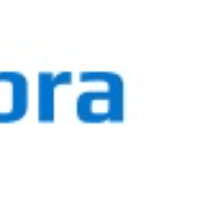What Is Blast Cleaning And Why Is It Essential For Surface Preparation In Industrial Surface Finishing?
Surface preparation is the unsung hero of industrial success. Whether you’re building an aircraft fuselage, fabricating EV battery casings, or manufacturing precision defense components, the finish quality of your parts often determines performance, safety, and longevity. That’s where blast cleaning comes in.
Blast cleaning isn’t just about stripping away contaminants—it’s about creating a surface profile that enables coatings, paints, or adhesives to bond with precision and durability. For industries where microscopic imperfections can translate into operational failures, this process is absolutely essential.
What exactly is blast cleaning?
Blast cleaning is a controlled process where abrasive particles (such as steel shot, grit, or specialized media) are propelled at high velocity against a material’s surface. The purpose: remove contaminants like rust, scale, old coatings, or machining residues, while also creating a textured surface that enhances adhesion.
Think of it as resetting the surface—stripping it down to its pure, clean state while simultaneously preparing it for the next phase of manufacturing or finishing.
In industrial finishing, especially for high-stakes industries like aerospace or defense, blast cleaning isn’t optional—it’s foundational.
Why is blast cleaning critical for aerospace and defense applications?
In aerospace and defense, the stakes couldn’t be higher. A coating failure on a turbine blade, fuselage panel, or missile casing isn’t just costly—it can be catastrophic. Blast cleaning ensures:
Precision adhesion: Paints, coatings, or protective films adhere reliably to cleaned and textured surfaces.
Corrosion resistance: By eliminating oxides and contaminants, surfaces resist degradation even in extreme conditions.
Extended lifecycle: Components last longer under stress, reducing costly maintenance cycles.
For example, when preparing aircraft landing gear components, blast cleaning removes micro-scale impurities that could otherwise lead to corrosion or cracking under heavy loads.
How does blast cleaning impact the automotive and EV industries?
In automotive and EV manufacturing, where production scales are massive and tolerances razor-thin, blast cleaning delivers:
Smooth but adhesive-ready surfaces for painting vehicle bodies or applying powder coatings.
Rust-free preparation of chassis parts to extend safety and performance.
Battery casing prep for EVs, ensuring that protective coatings prevent leaks, fire risks, or environmental degradation.
Imagine EV battery enclosures: even a tiny imperfection in the coating could compromise safety. Blast cleaning ensures the surface is flawless before protective coatings are applied.
What role does blast cleaning play in general manufacturing?
From machine tools to heavy equipment, manufacturers rely on blast cleaning to:
Prepare weldments for coatings or inspections.
Improve fatigue resistance by creating uniform surface finishes.
Enhance coating adhesion for parts exposed to harsh industrial conditions.
Take a gear manufacturer, for instance: blast cleaning not only removes machining scale but also creates a surface roughness that helps lubricants spread evenly, extending gear life.
What are the different types of blast cleaning?
Industries select the right blast cleaning process based on material, tolerance requirements, and environmental considerations:
Shot blasting: Ideal for heavy-duty components like automotive frames.
Grit blasting: Used for aggressive cleaning on steel and iron surfaces.
Bead blasting: Popular in aerospace for delicate yet precise finishes.
Dry ice blasting: An eco-friendly option for sensitive surfaces, leaving no abrasive residue.
Choosing the right media and method ensures that blast cleaning enhances rather than damages precision components.
Why is blast cleaning a value multiplier, not just a step in the process?
Too often, surface preparation is seen as just another box to check. In reality, blast cleaning directly affects:
Performance: Adhesion, wear resistance, and corrosion protection all trace back to surface prep.
Efficiency: A properly prepared surface reduces rework and coating failures.
Cost savings: Longer-lasting components and coatings lower lifecycle costs.
Skipping or underestimating blast cleaning can lead to premature failures, recalls, or costly downtime—risks that industries like aerospace, automotive, and defense simply cannot afford.
What does the future of blast cleaning look like?
Innovation is reshaping the field with:
Automated blast cleaning systems that ensure consistency at scale.
Robotic precision blasting for complex geometries like turbine blades.
Sustainable media such as dry ice or recycled abrasives to reduce environmental impact.
For industries racing toward electrification, automation, and sustainability, blast cleaning is evolving to stay not just relevant—but essential.
FAQ: Blast Cleaning in Industrial Surface Preparation
Q1. Is blast cleaning always required before coating or painting?
Not always, but in industries demanding high performance and durability (like aerospace or EV), it’s strongly recommended. It ensures adhesion and prevents costly failures.
Q2. Can blast cleaning damage delicate components?
Yes—if not properly controlled. That’s why aerospace and precision manufacturing often use bead blasting or softer media for fine components.
Q3. How is blast cleaning different from chemical cleaning?
Chemical cleaning removes contaminants but doesn’t texture the surface for coating adhesion. Blast cleaning does both in one step.
Q4. What safety measures are needed during blast cleaning?
Operators must follow OSHA standards, use protective gear, and ensure proper ventilation or dust collection systems. Automated systems increasingly improve both safety and consistency.
Q5. How does blast cleaning impact sustainability goals?
Modern processes use recyclable abrasives and eco-friendly options like dry ice, reducing waste and minimizing environmental impact.
Q6. Can blast cleaning be integrated into automated production lines?
Absolutely. Many manufacturers now deploy robotic and automated blast cleaning to streamline production, reduce labor costs, and ensure repeatable quality.
Q7. Which industries benefit most from blast cleaning?
Aerospace, automotive, EV, defense, shipbuilding, heavy equipment, and general manufacturing—anywhere durability and precision matter.
